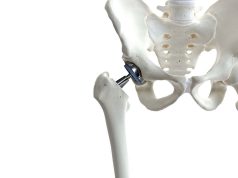Digestive Disease Week 2015
Digestive Disease Week, the annual meeting sponsored by the American Association for the Study of Liver Diseases, American Gastroenterological Association, American Society for Gastrointestinal Endoscopy, and Society for Surgery of the Alimentary Tract, was held from May 16 to 19 in Washington, D.C. The meeting attracted approximately 16,000 participants from around the world, including researchers and academicians in the fields of gastroenterology, hepatology, endoscopy, and gastrointestinal surgery.
During one study, Zobair Younossi, M.D., M.P.H., of Inova Fairfax Hospital in Falls Church, Va., and colleagues found a cost savings related to work productivity in patients with cured genotype-1 hepatitis C.
In a previously reported study, Younossi and colleagues had administered the work productivity and activity index instrument to 1,900 hepatitis C patients who were enrolled in the ION-1, -2 and -3 studies and treated with ledipasvir and sofosbuvir (LDV/SOF). “In this analysis, we found that hepatitis C patients had more work productivity impairment before treatment and experienced improvement in their work productivity during treatment. By the end of follow-up, patients who achieved sustained virologic response demonstrated continued improvement in work productivity,” Younossi said.
Using the work productivity scores from these trials, the investigators developed a model to estimate the economic impact of eradication of hepatitis C from the United States and five European countries.
“These regimens for genotype-1 hepatitis C with LDV/SOF leads to 95 percent cure rates. In addition to these cure rates we used country-specific prevalence rates for hepatitis C patients and labor statistics to construct six different computerized models. In these models, we also entered work productivity scores from ION-1, -2 and -3,” Younossi said. “Our data presented at DDW 2015 showed that if you cure genotype-1 hepatitis C with LDV/SOF, there will be $2.7 billion saving each year related to work productivity gains in cured hepatitis C patients the United States. We also found an additional half billion Euros saved in five European Union countries.”
The study was funded through a grant provided by Gilead Sciences, the manufacturer of the ledipasvir/sofosbuvir combination.
In another study, Jessica Cohan, M.D., of the University of California in San Francisco, and colleagues aimed to gain insight into how practicing clinicians can support the active involvement of patients in the decision-making process about surgery. In this study, the investigators focused on patients with ulcerative colitis faced with a decision between two equally effective surgical options — ileostomy and ileal pouch-anal anastomosis. The investigators surveyed 25 ulcerative colitis patients who had been referred for surgery but had not yet met with the surgeon.
“All 25 patients expressed the desire to participate in decision-making about surgery. Most patients also said they spoke with their family and/or friends about the decision. Over 70 percent of the patients reported that this discussion was important for their decision-making process,” Cohan said. “We also found that patients were very motivated to learn about surgery — they spent an average of six hours researching their treatment options before meeting with the surgeon.”
Participants reported that the most frequent sources of information were the Internet and the materials given to them by their doctor. Interestingly, participants said that the information provided by their doctor was the most trustworthy, but the least useful.
“The results of this study show that ulcerative colitis patients want to participate in the decision about surgery and that they are highly motivated to do so. However, patient education materials could be redesigned to support patients’ needs,” Cohan said. “We believe it is important that materials are designed to include information that is important to the patient and is presented in a way that supports discussion with family and friends.”
The investigators are currently designing and testing a decision-support tool that will facilitate patient participation in decision-making.
Andrew Ross, M.D., of the Virginia Mason Medical Center in Seattle, and colleagues found that use of computer-assisted propofol sedation (CAPS) for routine upper endoscopy and colonoscopy reduced recovery room time as compared to a combination of midazolam and fentanyl. The investigators assessed the CAPS system among 1,466 patients who were categorized as American Society of Anesthesiologists Class 1 (considered normal and healthy) or Class 2 (suffer from mild systemic diseases). The investigators found that CAPS patients who underwent an endoscopic procedure had an average recovery time of 27 minutes, which was faster than that seen in patients who underwent sedation with midazolam and fentanyl.
“Some patients do not respond well to sedation with midazolam and fentanyl, and others find that these two medications cause them to be in a ‘fog’ immediately after they wake up,” Ross said in a statement. “Results from our study demonstrate that clinicians can use CAPS for these patients and shorten their recovery time.”
DDW: Menopausal Hormone Tx Linked to Risk of Lower GI Bleeds
TUESDAY, May 19, 2015 (HealthDay News) — Menopausal hormone therapy (MHT) may raise the risk for lower gastrointestinal (GI) bleeding, according to new research scheduled to be presented at Digestive Disease Week, held from May 16 to 19 in Washington, D.C.
DDW: Many Probiotics Testing Positive for Trace Gluten
FRIDAY, May 15, 2015 (HealthDay News) — Many probiotic products contain traces of gluten and could cause problems for patients with celiac disease, according to a new study. The findings were scheduled to be presented Saturday at the annual Digestive Disease Week, held from May 16 to 19 in Washington, D.C.
Copyright © 2015 HealthDay. All rights reserved.







